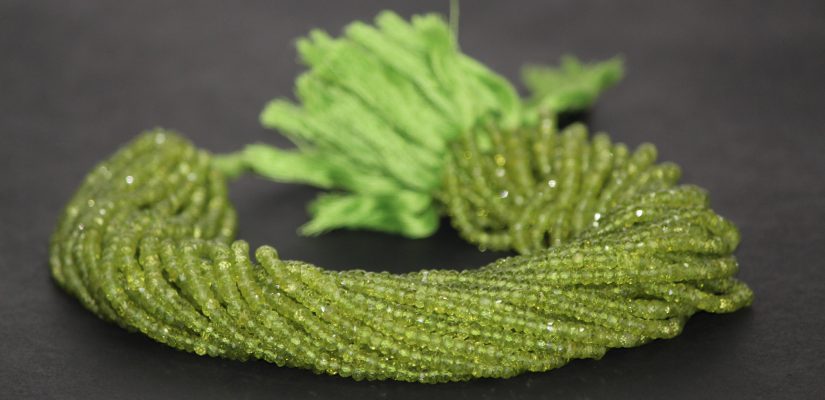
Peridot- The Jewel Creation
| Peridot (pronounced pair-uh-doe) is the gem variety of olivine. Olivine, which is not itself an official mineral, is composed of two minerals; fayalite and forsterite. Fayalite is the iron rich member with a pure formula of Fe2SiO4. Forsterite is the magnesium rich member with a pure formula of Mg2SiO4. Olivine’s formula is written as (Mg, Fe)2SiO4 to show the presence of magnesium and iron. Although iron is the coloring agent for peridot, it is usually closer to forsterite than fayalite in composition. The best-colored peridot has an iron percentage of less than 15% and includes nickel and chromium as trace elements that may also contribute to the color.
Most gemstones of mineral origin are formed in the earth’s crust. But there are two exceptions; both peridot and diamond are formed much deeper in the earth, in the region referred to as the mantle. Peridot crystals form in magma from the upper mantle (20 to 55 miles deep) and are brought to the surface by tectonic or volcanic activity where they are found in extrusive igneous rock. Diamonds were formed much deeper in the mantle (around 100 – 150 miles below the surface), at extreme temperatures and pressures. Peridot is one of the few gemstones that comes in only one color. The depth of green depends on how much iron is contained in the crystal structure and varies from yellow-green to olive or brownish-green. Peridot is sometimes referred to as “the poor man’s emerald” Olivine is a very abundant mineral, but gem-quality peridot is actually rather rare. Important peridot sources are Burma, Pakistan, China, Vietnam and the United States. The finest quality peridot has traditionally come from Mogok in Burma, though the Pakistani peridot is now highly regarded as well. For many years, the USA was the largest producer of peridot. Deposits in Arizona are the major source of American peridot. Peridot Mesa, located on the San Carlos Apache Indian Reservation east of Globe in Gila County, is the most productive area for peridot in the world. A second Arizona location, from which peridot is recovered, is Buell Park in Apache County, Arizona, about 16 kilometers north of Fort Defiance. However, it is estimated that 80% to 95% of the world’s commercial quality peridot comes from the San Carlos Reservation. Peridot is the birthstone for the month of August. The largest cut peridot weighs 310 carats and is housed at the Smithsonian in Washington, D.C.; a 192.75-carat stone that belonged to the czars is in the Diamond Treasury, Moscow; and a 146-carat peridot is kept in the Geological Museum in London, England. Peridot is a relatively inexpensive gemstone in small sizes, but the value goes up with stones weighing over 5 carats; 10-15 carat stones are very rare and expensive. There is no known treatment to improve the color or clarity of peridot, so peridot is always an untreated gem. |
Recent Comments